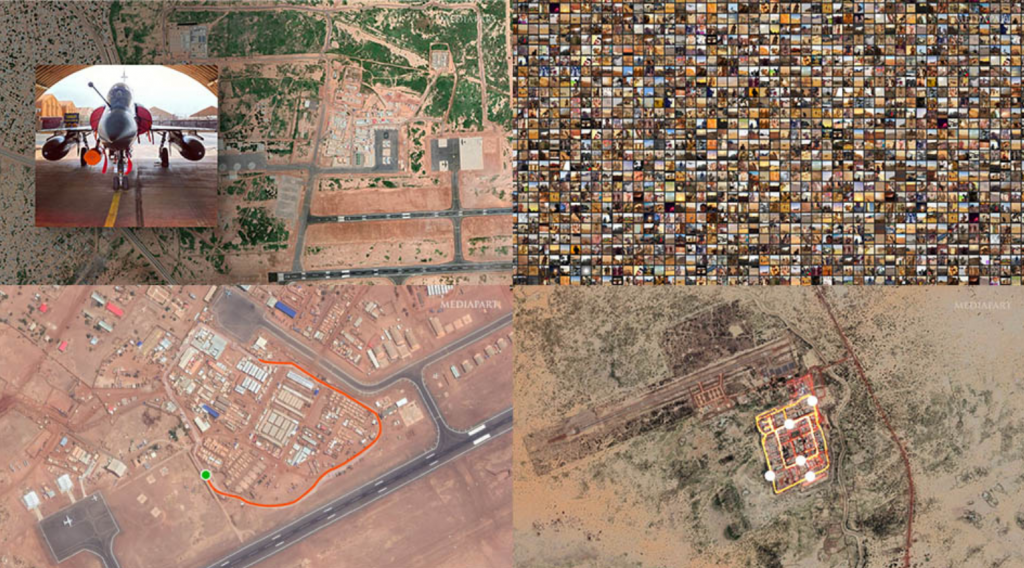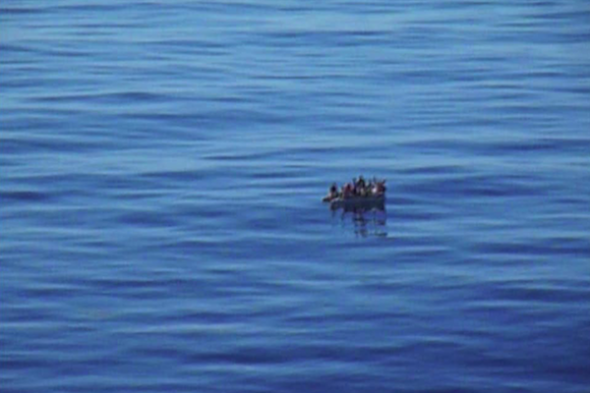Webinaire “Les Images en commun” 2021-2022
The sessions of this cycle of virtual encounters have been conceived as a place for discussion between image practitioners appropriating user-generated content, art and media theorists, activists, or anyone else manipulating UGC.
SÉANCE 1 : Liselotte Mas, Antoine Schirer et Félix Tréguer

For this first session, we were pleased to be joint by:
— Liselotte Mas, journalist
— Antoine Schirer, directo, motion designer, journalis
— Félix Tréguer, scholar and foundating-member of La Quadrature du Net
Together, our guests questioned the role played by User Generated Content in open source investigation and OSINT journalism.
Moderated by Allan Deneuville and Gala Hernández López.
SÉANCE 2 : Nilgun Bayraktar, Philip Scheffner & Stefan Kruse
— Nilgun Bayraktar, Scholar and teacher at California College of the Arts
— Philip Scheffner, german artist and director
— Stefan Kruse, danish artist and director
We are pleased to present the recording of the second session of our seminar “Images in Commons”. For this second session, held in English, we were pleased to welcome Nilgun Bayraktar, researcher and Professor at the California College of the Arts; Philip Scheffner, German artist and filmmaker and Stefan Kruse, Danish artist and filmmaker.
After a presentation by Nilgun Bayraktar and the viewing of some fragments of the documentary films “Havarie” (Scheffner, 2016) and “The Migrating Image” (Kruse, 2018) a time of discussion between the three guests, and eventually with the audience, took place.
HAVARIE, Philip Scheffner, 2016, 93min.
“From a cruise ship, we see 13 people trying to cross the Mediterranean. A YouTube video of this encounter, transformed here into an almost-fixed image, accompanies a story of migration, the communication between the captain and the rescue team, the testimony of the man who filmed these images… Perspectives that question these images, which are destined to recur, over and over again.”
(Mourad Moussa – Visions du Réel)
THE MIGRATING IMAGE, Stefan Kruse, 2018, 28min.
“By following a fictional group of refugees across Europe, the film questions the overproduction of images surrounding real-life tragedies and deaths. Each segment of the project takes its cue from the destination of the refugees, from the Mediterranean Sea to being stuck in a warehouse somewhere in Belgrade. Where do all these images about refugees come from? How do they reshape the geography of Europe?”
(Giona A. Nazzaro – Visions du Réel)

We are pleased to present the recording of the third session of our seminar “Images in Commons”. For this session, we were honored to welcome filmmaker Jane Schoenbrun, and Eliza Steinbock, Associate Professor in Gender and Diversity Studies at Maastricht University.
Together they discussed Schoenbrun’s films “A Self-Induced Hallucination” (2018) and “We’re All Going to the World’s Fair” (2021), presented in the light of Steinbock’s ongoing research into the aesthetics and politics of trans cinema.
*A SELF-INDUCED HALLUCINATION* (2018, 74 min)
Comprised entirely of found YouTube footage, Jane Schoenbrun’s experimental non-fiction essay is a headlong, often hilarious dive into the online myth of Slender Man and the fractal narrative structure of the internet as a whole.
*WE’RE ALL GOING TO THE WORLD’S FAIR* (2021, 86 min)
Alone in her attic bedroom, teenager Casey becomes immersed in an online role-playing horror game, wherein she begins to document the changes that may or may not be happening to her.
– with Anna Cobb and Michael J. Rogers.
JANE SCHOENBRUN (they/she) is a non-binary filmmaker and the writer/director of the upcoming A24 feature film “I Saw the TV Glow”, produced by Emma Stone & Dave McCary’s Fruit Tree Productions. Their first narrative feature film “We’re All Going to the World’s Fair” premiered in the NEXT section at the 2021 Sundance Film Festival. We’re All Going to the World’s Fair recently played at the 50th annual New Directors/New Films, and will be released in theaters soon by Utopia Pictures and then made available for streaming via HBOMax. Jane’s previous projects include co-creating the touring variety series “The Eyeslicer” (Tribeca 2017), creating the Radical Film Fair (a film flea market and mentorship event that drew thousands of attendees), directing the feature documentary “A Self-Induced Hallucination” (Rotterdam 2019), producing Aaron Schimberg’s “Chained for Life” (Kino Lorber 2019), EPing season one of Terence Nance’s “Random Acts of Flyness” (HBO 2018), and creating the omnibus ‘dream film’ “collective:unconscious” (SXSW 2016). Jane sometimes publishes the column “Continue Watching” for FILMMAKER Magazine, and has previously worked as the Senior Film Lead at Kickstarter and as the Associate Director of Programming at IFP.
ELIZA STEINBOCK (they/them) is a visual culture scholar specialised in trans studies and intersectional analysis, currently working as Associate Professor in Gender and Diversity Studies at Maastricht University. Their research combines philosophical analysis of aesthetics and embodiment, discursive and visual analysis with methods of travelling concepts, ethnography, and interview. They lead the NWO Smart Culture project “The Critical Visitor: Intersectional Approaches for Rethinking and Retooling Accessibility and Inclusivity in Heritage Spaces” (2020-2025), and are the author of the 2019 book “Shimmering Images. Trans Cinema, Embodiment, and the Aesthetics of Change”, published by the Duke University Press.
SESSION 4: Jason Middleton & Emmanuel Van der Auwera
SESSION 5 : Marie-Pier Boucher & Dominic Gagnon

For this fifth session of the seminar, and the first one in person, we are pleased to welcome the Quebec filmmaker Dominic Gagnon and the researcher Marie-Pier Boucher for a meeting about Dominic Gagnon’s next film, life in space and in extreme environments, weightlessness, documentary science fiction, but also confinement.
The meeting will take place in the screening room of the University of Paris 8 Vincennes-Saint-Denis at 5pm on 25 May.
Born in 1974 in Quebec, Dominic Gagnon has been directing some twenty short and feature films since 1996, and since 2009 and Rip In Pieces in America, he has been developing what he calls “saved footage”. To put it in a few words, it is the editing of non-viral videos retrieved essentially from YouTube and targeting a specific subject. Saved”, both for the extremely marginal character of these videos and for the fact, as he frequently explains, that their saving is partly motivated by the high probability of their deletion by the host. With Of the North, released in 2015, Dominic Gagnon began a cycle devoted to the imaginary of the cardinal points, which has found a recent extension in Going South and Big in China.
Marie-Pier Boucher is an Assistant Professor of Media Theory at the Institute for Communication, Culture, Information and Technology at the University of Toronto. Prior to joining the University of Toronto, she was a Mellon Postdoctoral Fellow at the Center for Art, Science and Technology + Program in Science, Technology and Society at MIT. Her research focuses on the design of life-sustaining habitats in extreme environments. She is currently working on a book project that investigates the relationship between health, architectural design, and perceptual activity in a range of extreme environments (physical and symbolic) to examine how changes in direction and orientation induced by levitation and microgravity can inform the design of earth-based habitats. She is also working on an umbrella project, Interplanetary Habitation: The Earth, the Moon, Mars and the City, which investigates the socio-technical future of planetary life in relation to growing concerns about health and biotechnology, mobility and artificial intelligence.
Seminar supported by the Fondation de France – Dream Big and Grow Fast grant.